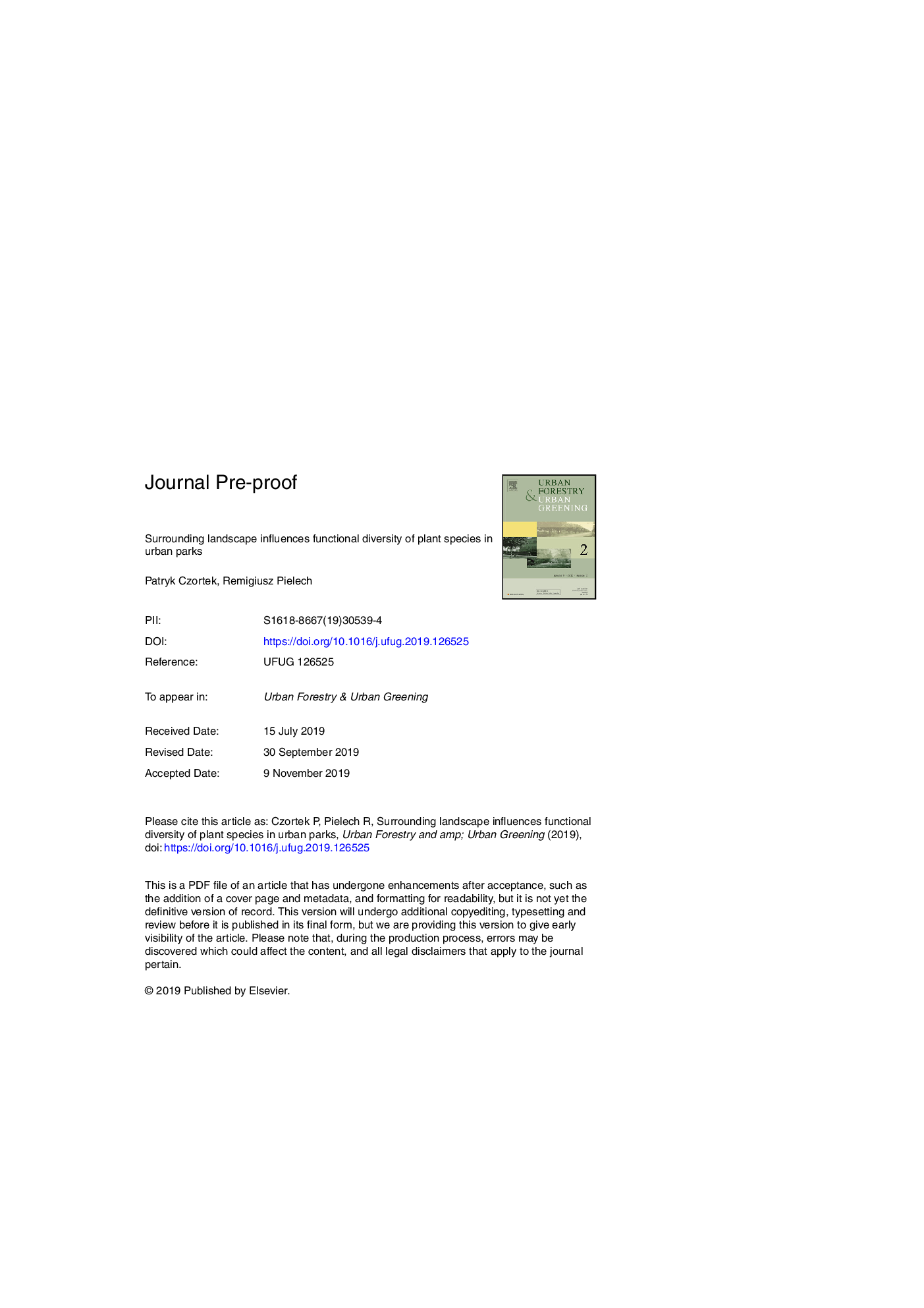| Article ID | Journal | Published Year | Pages | File Type |
|---|---|---|---|---|
| 13408346 | Urban Forestry & Urban Greening | 2020 | 44 Pages |
Abstract
Urban parks constitute one of the most important elements of the urban green infrastructure. However, knowledge on how the surrounding landscape influences the functional diversity of plant species is still insufficient. The aim of this study was to assess the impacts of different landscape features in proximity of urban parks on their functional diversity and to recognise the community-level coexistence patterns of the plant species. We demonstrated that an increasing river net density had a positive impact on the functional richness and promoted the occurrence of native xerophytes, non-invasive archaeophytes and invasive kenophytes in urban parks. On the contrary, a higher contribution of settlements drove a decrease in the functional dispersion and had a negative impact on the frequency of deciduous forest species. The conservation of urban parks should be a focus for the maintenance of a high variety of pioneer habitat conditions, which are suitable for rare archaeophytes and xerothermic species. The management of invasive species should be the focus of their removal from open habitats and to prevent them from entering the forest interiors. This may be achieved, for instance, by the maintenance of well-developed edge zones composed of a high number of competitive shrubs and nitrophilous tall herbs of native origin.
Related Topics
Life Sciences
Agricultural and Biological Sciences
Forestry
Authors
Patryk Czortek, Remigiusz Pielech,
